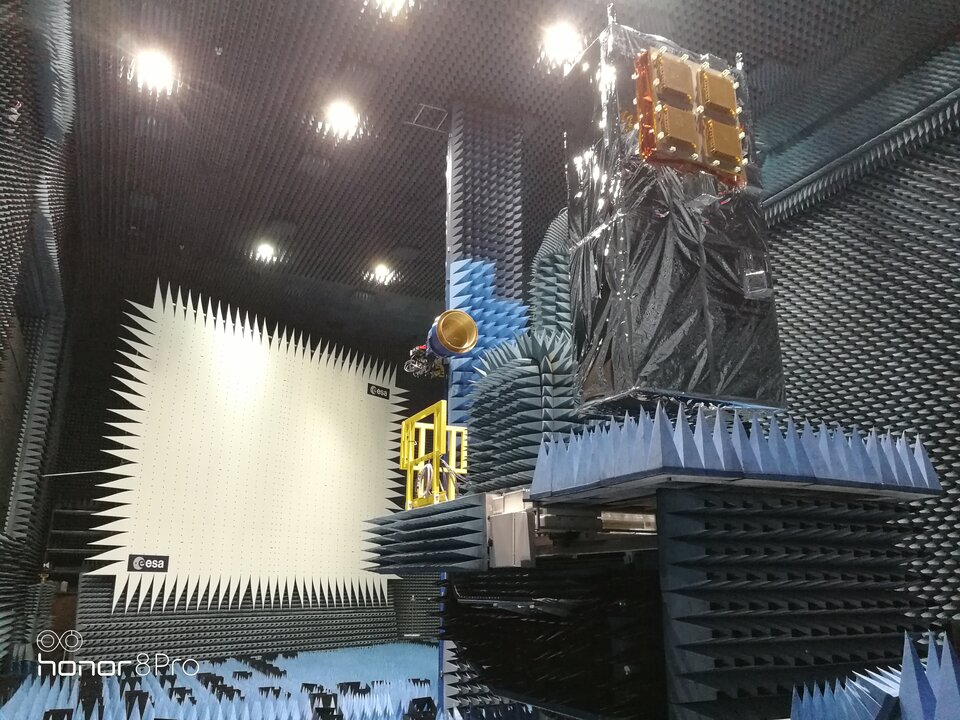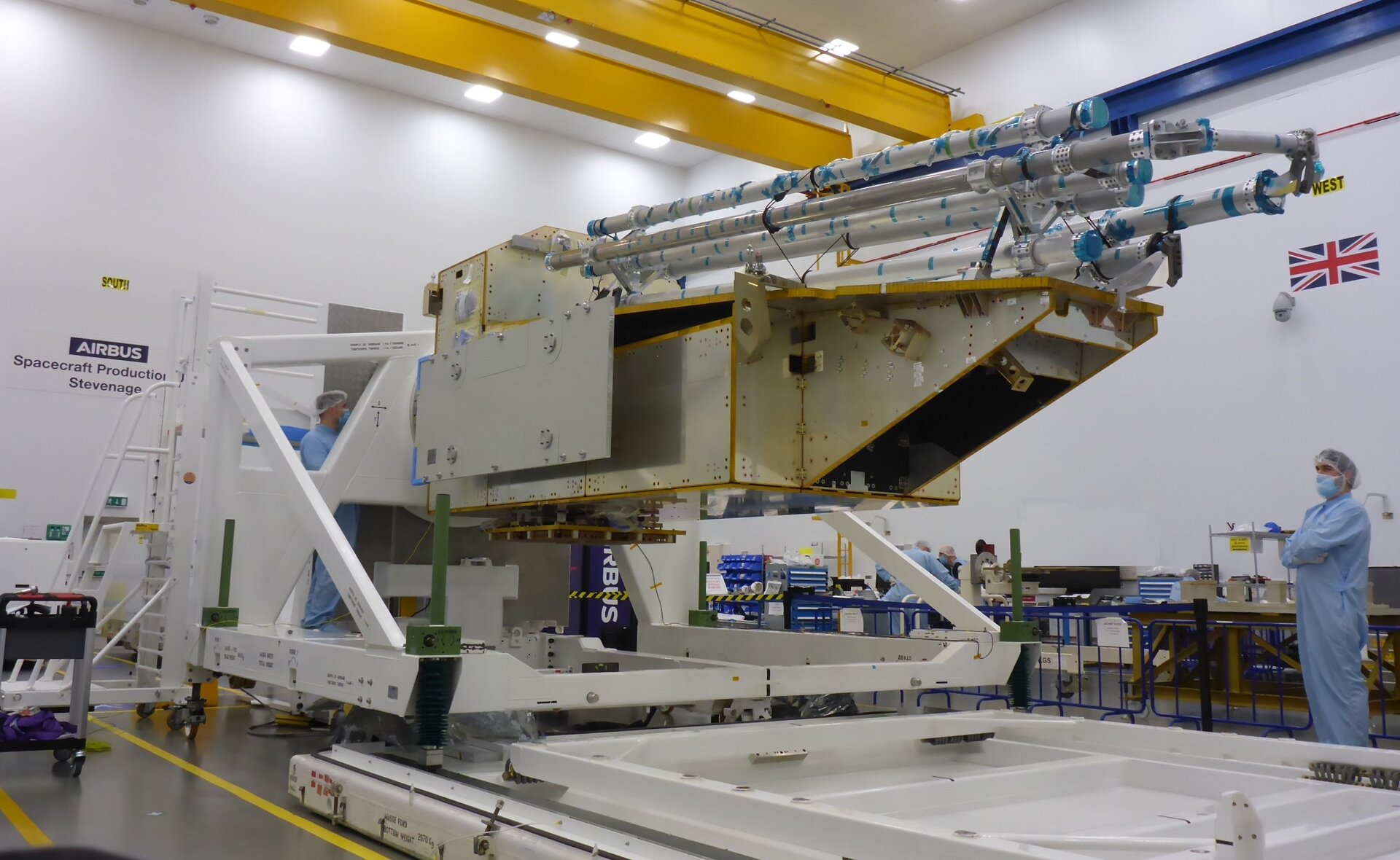The satellite
The Biomass satellite uses the unique sensitivity of P-band to determine, from space, for the first time, the amount of biomass – a proxy for carbon – stored in forests. A large deployable reflector, measuring 12 m across and supplied by L3Harris Technologies, dominates the satellite.
This is one of the main elements of the instrument payload and it is mounted directly to the side of the satellite platform. The reflector is a wire mesh design, which is secured to the side of the satellite for launch. Once released into orbit, a three-piece boom deploys the stowed reflector bundle into position. When the boom hinges lock into their final positions the reflector bundle is released and opened up to provide a highly accurate and stable 12 m aperture wire-mesh reflector.
The design of the satellite has been driven by the needs of the different configurations required during the mission, specifically:
Stowed for launch, where the stowed reflector must be accommodated within the Vega rocket fairing, while maintaining a structural architecture that can tolerate the various launch environments. This has resulted in the unique shape of the satellite platform.

Deployment of reflector and solar array, where the deployments should not hinder sensor and antenna availability by passing through their respective fields of view.
Deployed in orbit, where the relative geometry and pointing stability of the reflector and feed array are critical for the science mission, and the provision of adequate radiator area is needed for thermal reasons.
These configurations lead to a complex attitude and orbit control subsystem with dedicated modes for the stowed configuration, the deployment configuration and the final in-orbit configuration, in addition to the classic orbit control modes and safe mode. Once in the final configuration, the attitude and orbit control subsystem maintains the satellite in an Earth-pointing attitude during the routine operations.
The satellite also accommodates various subsystems such as instrument electronics, an attitude and orbit control system, a reaction control system, a thermal control system and data handling units.
Biomass also carries a camera that takes images of the antenna deployment.
Biomass operates in a dawn-dusk, Sun-synchronous orbit at a mean altitude of 666 km and an inclination of around 98°. A dawn (06:00) ascending node time minimises any adverse effects of the ionosphere on the radar signal.
Following the launch of the satellite and commissioning, the mission will include a tomographic phase lasting 425 days and an interferometric phase lasting 1400 days.
The mission has been designed with a lifetime of 5.5 years.
Back to Biomass homepage |









